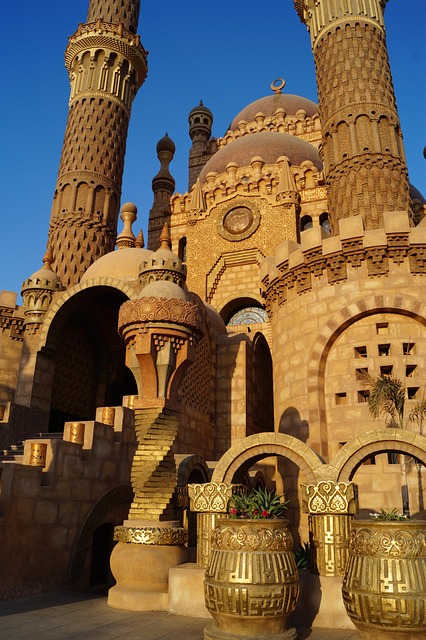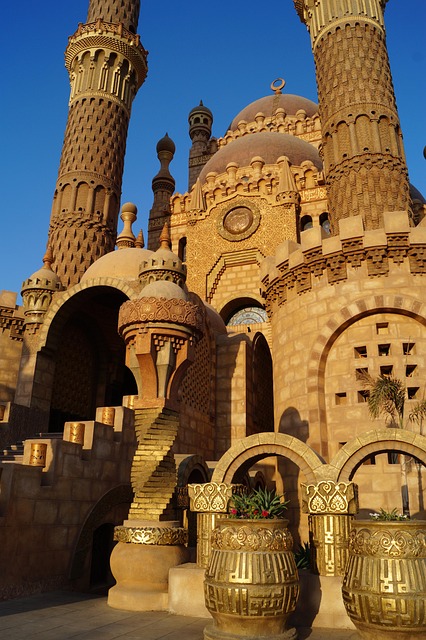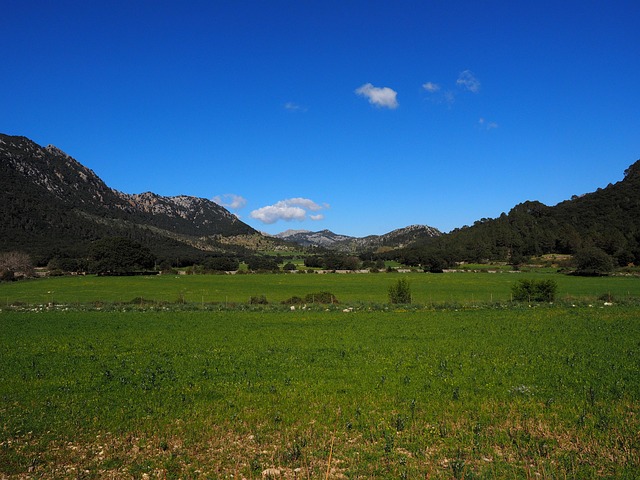Category: Transit-Oriented
Transit-Oriented: Redefining Urban Living and Mobility
Introduction
In an era where urban populations are booming, efficient and sustainable transportation systems have become the backbone of thriving cities. Among these, the concept of Transit-Oriented development (TOD) has emerged as a game-changer, transforming the way we design and experience urban spaces. TOD is not merely about improving infrastructure; it encompasses a holistic approach to urban planning, focusing on integrating residential, commercial, and recreational areas within easy access of public transportation hubs. This article aims to delve into the depths of this innovative concept, exploring its definition, global impact, economic implications, technological innovations, policy frameworks, and the challenges it faces. By examining real-world examples and analyzing future trends, we will uncover the profound influence of TOD on shaping sustainable and livable cities worldwide.
Understanding Transit-Oriented Development (TOD)
Definition: Transit-Oriented development refers to a urban planning and design strategy that promotes compact, mixed-use neighborhoods centered around high-frequency public transportation nodes, such as train stations, subway stops, or bus interchanges. The primary goal is to foster walkability, reduce car dependency, and encourage the use of sustainable transportation options. TOD communities are characterized by dense residential and commercial buildings, with convenient access to amenities, employment opportunities, and entertainment venues within a short distance from public transit hubs.
Core Components:
- Mixed-Use Development: TOD encourages the integration of residential, commercial, retail, and recreational spaces in close proximity. This mix supports a vibrant urban environment, reduces travel distances, and promotes a sense of community.
- Pedestrian Access and Walkability: The focus is on designing neighborhoods that are easily navigable on foot, with well-connected streetscapes, pedestrian walkways, and safe crossing points.
- Public Transportation Accessibility: TOD prioritizes locations adjacent to or within walking distance of transit stations, ensuring convenient access to efficient public transport networks.
- Density and Compactness: Higher building density is encouraged to optimize land use and reduce urban sprawl, while maintaining a human scale and comfortable living environments.
- Sustainable Design: Incorporating green spaces, energy-efficient buildings, renewable energy sources, and sustainable transportation options like bike lanes and electric vehicle charging stations.
Historical Context: The concept of TOD has its roots in the early 20th century when urban planners began to recognize the impact of public transportation on shaping cities. The rise of subway systems in cities like New York and London inspired the development of compact, transit-connected neighborhoods. However, it was during the late 1980s and 1990s that TOD gained significant momentum as a strategy for revitalizing urban areas and promoting sustainable growth. The success stories of Vancouver’s Gastown and Seattle’s Ballard neighborhoods, among others, showcased the benefits of integrating dense development with efficient public transit, leading to widespread adoption of these principles globally.
Significance: TOD is crucial in addressing various urban challenges:
- Reducing Traffic Congestion: By encouraging the use of public transport and reducing car dependency, TOD can alleviate traffic jams and decrease road congestion, making cities more livable and efficient.
- Improving Air Quality: Lower vehicle emissions contribute to better air quality, benefiting public health and the environment.
- Promoting Urban Vitality: Mixed-use development fosters a vibrant urban atmosphere, attracting residents, workers, and visitors, and enhancing local economies.
- Sustainable Land Use: Efficient use of land through density and compactness helps preserve open spaces and reduces urban sprawl.
- Affordable Housing: TOD can support affordable housing options by maximizing the value of transportation infrastructure, making cities more inclusive.
Global Impact and Trends
Transit-Oriented development has gained international recognition as a viable solution for sustainable urban planning, with adoption and adaptation across diverse regions:
| Region | Notable Examples | Key Features |
|---|---|---|
| North America | Toronto, Vancouver, Boston | Emphasis on dense, mixed-use neighborhoods around transit hubs. Comprehensive bike infrastructure and pedestrian-friendly design. |
| Europe | Berlin, Amsterdam, London | Historic cities integrating TOD principles with their unique architectural heritage. High-frequency rail and tram networks. |
| Asia Pacific | Singapore, Tokyo, Sydney | Compact, high-rise development near transit. Efficient bus and subway systems. Green spaces integrated into urban design. |
| Latin America | São Paulo, Mexico City | Rapidly growing cities implementing TOD to alleviate traffic congestion. Focus on affordable housing and social inclusion. |
| Middle East | Dubai, Abu Dhabi | Futuristic designs with high-speed rail and extensive pedestrian zones. Emphasis on creating walkable, vibrant city centers. |
These global trends reflect a growing consensus that Transit-Oriented development is not limited by geography or cultural boundaries but rather adapts to local contexts while delivering substantial benefits in terms of sustainability, economic vitality, and improved quality of life.
Economic Considerations
Market Dynamics
TOD has a profound impact on real estate markets:
- Increased Property Values: Neighborhoods with excellent public transportation access often experience higher property values due to their desirability for residents and investors.
- Rental Demand: Mixed-use developments attract a diverse range of tenants, including young professionals, students, and retirees, driving rental market demand.
- Commercial Viability: Retailers and businesses benefit from high foot traffic, while offices in TOD areas often command premium rents.
Economic Growth and Job Creation
- Local Businesses Prosper: The vibrancy of TOD neighborhoods attracts entrepreneurs, leading to the growth of local restaurants, shops, and services.
- Employment Opportunities: Mixed-use developments support a diverse range of jobs, from retail and hospitality to professional services and manufacturing, within walking distance of residents’ homes.
- Reduced Commuting Costs: Residents save on transportation expenses, boosting disposable incomes and local spending.
Public Transport Revenue
Efficient public transport systems in TOD areas contribute to increased passenger numbers, leading to higher revenue for transit operators. This additional funding can be reinvested in expanding and improving transportation networks, creating a positive cycle of development and service enhancement.
Technological Innovations in TOD
Advancements in technology are transforming the Transit-Oriented development landscape:
- Smart Transit Systems: Real-time traffic monitoring, automated ticketing, and integrated mobility apps enhance the efficiency and convenience of public transportation.
- Digital Wayfinding: Digital signage and mobile applications guide pedestrians to nearby amenities, transit connections, and available services, improving wayfinding experiences.
- Electric Mobility: The adoption of electric buses, scooters, and bikes as part of multi-modal transport networks reduces emissions and contributes to a cleaner urban environment.
- Data Analytics: Utilizing data analytics for demand forecasting helps transit operators optimize routes and schedules, ensuring efficient service during peak and off-peak hours.
- Sustainable Energy Solutions: Solar panels, wind turbines, and energy-efficient buildings contribute to the carbon reduction goals of TOD communities.
Policy Frameworks and Implementation
Successful TOD projects rely on supportive policy frameworks and strategic planning:
- Zoning Regulations: Amending zoning laws to permit higher density development near transit hubs is crucial. Mixed-use zoning allows for the integration of residential, commercial, and recreational spaces.
- Infrastructure Investment: Governments play a vital role in investing in public transportation infrastructure, ensuring its reliability and accessibility.
- Partnerships with Developers: Collaborating with private developers encourages innovative design and funding models, fostering successful TOD projects.
- Community Engagement: Engaging residents, businesses, and local stakeholders ensures that TOD plans align with the needs and aspirations of the community.
- Incentives and Subsidies: Financial incentives for developers and subsidies for affordable housing initiatives can accelerate TOD development.
Challenges and Considerations
Despite its numerous benefits, Transit-Oriented development faces several challenges:
- Initial Costs: Developing land near transit hubs often involves higher acquisition and construction costs, which may deter some investors. However, long-term economic returns and public transportation subsidies can mitigate these concerns.
- Transportation Capacity: Rapid urban growth can strain existing public transport systems, requiring careful planning for capacity expansion and service improvements.
- Community Resistance: Local residents’ concerns about increased density, noise, or changes to neighborhood character may require extensive community engagement and comprehensive planning to address.
- Inclusion and Affordability: Ensuring that TOD benefits reach all segments of society, including low-income groups, requires thoughtful housing policies and inclusive urban design.
- Maintaining Walkability: As cities grow, maintaining pedestrian-friendly neighborhoods requires continuous effort to counteract the tendency towards car-dependent development.
Future Trends and Prospects
The future of Transit-Oriented development is poised for further innovation and expansion:
- Smart Cities Integration: TOD will increasingly incorporate smart city technologies, enhancing connectivity, sustainability, and quality of life through data-driven solutions.
- Multimodal Transport Networks: The integration of various transportation modes, including shared mobility options, will provide flexible and convenient travel choices for residents.
- Green Infrastructure: Urban greening initiatives, such as green roofs, vertical gardens, and rain gardens, will become integral to TOD design, promoting biodiversity and improving air quality.
- Digital Twin Cities: Advanced digital modeling and simulation technologies will enable cities to plan and visualize TOD projects more effectively, optimizing designs for future urban growth.
- Resilient Urban Design: Adapting to climate change through resilient infrastructure, flood-resistant buildings, and water management strategies will be essential in shaping sustainable TOD communities.
Conclusion
Transit-Oriented development represents a powerful approach to creating sustainable, vibrant, and livable cities worldwide. By integrating efficient public transportation with mixed-use neighborhoods, this strategy addresses urban challenges related to traffic congestion, air quality, land use, and economic vitality. As technology advances and policy frameworks evolve, the potential of TOD to transform urban landscapes while improving the quality of life for residents is boundless. Overcoming current challenges through innovative solutions and inclusive planning will ensure that Transit-Oriented development continues to shape the cities of tomorrow.
Real Estate Secrets for Commuters: Streamline Your Day
Boost Property Value: Design Near Public Transport

Real estate developers need to adapt to evolving buyer preferences, focusing on properties near publ…….
Revolutionize Districts: Integrate Residential, Commercial Spaces in Real Estate

Mixed-use real estate development seamlessly blends residential, commercial, and recreational areas,…….
Boost Local Economy: Transit Nodes & Smart Real Estate Strategies

Strategic Transit-Oriented Development (TOD) maximizes real estate potential by integrating resident…….
Boost Real Estate Value: Develop Near Public Transport

Convenience and proximity to efficient public transport are key drivers in real estate choices, boos…….
Boost Real Estate: Develop Near Public Transport for Sustainable Living

Urban dwellers increasingly favor transit-oriented living near public transport hubs, driven by a pr…….
Fostering Eco-Friendly Neighborhoods Through Walkable Real Estate

In the digital age, walkability in urban planning is key to sustainable neighborhoods. Real estate d…….
Revitalize Districts: Blend Commercial, Residential for Vibrant Communities

Mixed-use real estate developments revolutionize urban areas by integrating residential, commercial,…….
Maximizing Property Value Through Transit Accessibility in Real Estate

In a competitive real estate market, understanding local demands, especially for properties near pub…….

